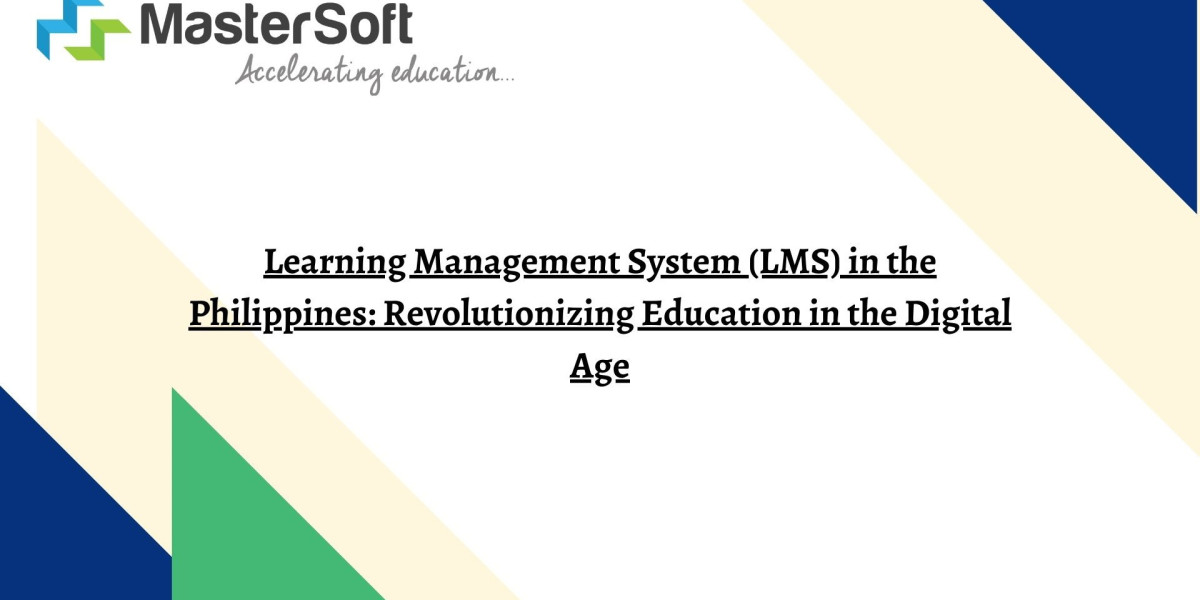The global education landscape has rapidly evolved, driven by technological advancements and the increasing need for flexibility in learning. In the Philippines, the integration of Learning Management Systems (LMS) has played a pivotal role in transforming traditional education into a more accessible, engaging, and efficient system. As the country continues to adapt to the demands of the digital age, LMS platforms have become indispensable tools for both educators and students.
This blog will explore the significance of LMS in the Philippine educational system, the benefits it offers, and how it is shaping the future of learning.
What is a Learning Management System (LMS)?
A Learning Management System (LMS) is a software platform designed to facilitate the administration, delivery, tracking, and assessment of educational courses and training programs. LMS platforms provide educators with the tools to create, manage, and distribute content online, while students can access learning materials, participate in discussions, submit assignments, and receive feedback from anywhere with an internet connection.
In the Philippines, LMS platforms are used across various educational levels, from K-12 schools to higher education institutions and even in corporate training settings. This digital approach to education has gained traction, especially in the wake of the COVID-19 pandemic, where remote and blended learning became essential.
The Importance of LMS in Philippine Education
The rise of e-learning and the need for more flexible education delivery models have made LMS platforms an integral part of the Philippine educational landscape. Here are some reasons why LMS is crucial for the future of education in the country:
1. Accessibility and Flexibility
One of the primary benefits of LMS is its ability to provide education to students regardless of their geographical location. In a country like the Philippines, where many students live in remote areas, LMS platforms allow learners to access high-quality educational content without the need to travel to physical classrooms.
LMS enables flexible learning schedules, allowing students to learn at their own pace and convenience. This flexibility is particularly beneficial for working students, adult learners, and individuals with other commitments.
2. Enhanced Engagement and Interactivity
Unlike traditional classroom settings where the learning experience is often passive, LMS platforms foster a more interactive and engaging learning environment. Through discussion forums, quizzes, video lectures, and multimedia content, students can actively participate in their learning journey.
Additionally, many LMS platforms incorporate gamification elements, such as badges, leaderboards, and progress tracking, to motivate students and make learning more enjoyable.
3. Efficient Course Management and Delivery
For educators, LMS provides an efficient way to manage and deliver courses. Teachers can easily upload course materials, assign tasks, monitor student progress, and provide personalized feedback. The ability to automate administrative tasks, such as grading and attendance tracking, allows educators to focus more on the quality of instruction and student engagement.
LMS also offers the flexibility to update and modify course content quickly, ensuring that learners receive the most up-to-date information and resources.
4. Data-Driven Insights and Analytics
LMS platforms offer robust analytics features that allow educators and institutions to gain insights into student performance and engagement. By tracking data such as completion rates, test scores, and participation levels, educators can identify areas where students may be struggling and adjust their teaching strategies accordingly.
These data-driven insights also help institutions assess the effectiveness of their programs and make informed decisions about curriculum development and resource allocation.
5. Cost-Effective Learning Solutions
In a country where access to education can be limited due to financial constraints, LMS provides a cost-effective alternative to traditional learning models. By reducing the need for physical infrastructure, transportation, and printed materials, LMS significantly lowers the overall cost of education.
Additionally, many LMS platforms offer open educational resources (OERs), which are freely available to both educators and students. This further reduces the financial burden on learners while ensuring access to quality education.
Popular LMS Platforms in the Philippines
Several LMS platforms have gained popularity in the Philippines due to their user-friendly interfaces, extensive features, and adaptability to local educational needs. Some of the most widely used LMS platforms include:
1. Moodle
Moodle is an open-source LMS that is widely used in educational institutions in the Philippines. It offers a highly customizable platform with a wide range of features, including course creation tools, assessments, discussion forums, and multimedia integration. Moodle is popular for its flexibility and scalability, making it suitable for institutions of all sizes.
2. Google Classroom
Google Classroom is another popular LMS platform in the Philippines, particularly for K-12 schools. It is part of the Google Workspace for Education suite, providing seamless integration with other Google tools like Google Drive, Docs, and Meet. Google Classroom is known for its simplicity and ease of use, making it a favorite among educators who are new to e-learning.
3. Canvas
Canvas is a widely used LMS in higher education institutions in the Philippines. It offers an intuitive user interface, mobile accessibility, and a range of tools for content delivery, collaboration, and assessment. Canvas is known for its robust analytics and reporting features, making it an ideal choice for institutions that prioritize data-driven decision-making.
4. Edmodo
Edmodo is an LMS platform designed to create a collaborative and engaging learning environment. It is particularly popular in the K-12 sector, offering features like assignment submissions, quizzes, and communication tools for teachers, students, and parents. Edmodo’s social media-like interface makes it easy for students to navigate and engage with learning content.
Challenges and Opportunities in LMS Adoption
While the adoption of LMS in the Philippines has brought significant benefits, there are also challenges that need to be addressed to ensure its long-term success.
1. Digital Divide
One of the primary challenges in LMS adoption is the digital divide—the gap between those who have access to technology and the internet and those who do not. In many remote and rural areas in the Philippines, students and teachers face limited access to reliable internet connectivity and devices, hindering their ability to fully benefit from LMS platforms.
To address this issue, the government and private sector need to invest in digital infrastructure and provide affordable technology solutions to bridge the gap.
2. Teacher Training and Support
For LMS platforms to be effective, educators need to be well-trained in using these tools. However, many teachers in the Philippines are still unfamiliar with digital platforms and may struggle to adapt to this new mode of teaching. Providing comprehensive training and ongoing support to educators is crucial to ensuring the successful integration of LMS into the educational system.
3. Student Engagement and Motivation
While LMS offers a more interactive and flexible learning environment, some students may find it challenging to stay motivated and engaged in an online setting. It is essential for educators to develop strategies that keep students actively involved in their learning, such as incorporating multimedia content, collaborative activities, and regular feedback.
The Future of LMS in the Philippines
As the Philippine educational system continues to evolve, the role of LMS will only become more significant. With advancements in AI, virtual reality, and adaptive learning, LMS platforms are expected to offer even more personalized and immersive learning experiences in the future.
The integration of LMS into the educational landscape provides an opportunity to make education more inclusive, flexible, and engaging for all learners, regardless of their location or socio-economic background. By addressing the challenges of access and training, the Philippines can harness the full potential of LMS to create a more equitable and effective education system.
Conclusion
Learning Management Systems have become a game-changer in the Philippine education system, offering a flexible, interactive, and cost-effective solution to traditional learning models. As the country continues to embrace digital transformation in education, LMS platforms will play a crucial role in providing accessible and high-quality education to students across the nation.
By investing in digital infrastructure, teacher training, and student engagement strategies, the Philippines can unlock the full potential of LMS and ensure that learners are well-equipped to thrive in the 21st-century global economy.








